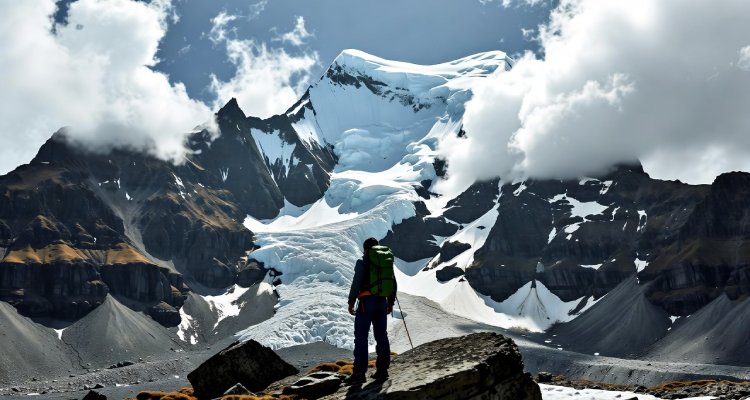Why Some Mountains Refuse to Be Climbed
Discover why some mountains remain unclimbed due to spiritual, legal, and environmental factors, offering profound insight into modern exploration challenges.
Introduction: The Allure and Mystery of Unclimbed Peaks
Mountains have long symbolized human challenge and conquest. From Everest to K2, climbers push their limits to reach summits once thought unreachable. Yet, intriguing exceptions exist—some mountains remain mysteriously unclimbed despite modern technology and ambition. Why do these peaks resist human exploration? Exploring this question reveals a complex blend of natural danger, cultural significance, and legal protections that define the rare summits humans still dare not claim.
Context & Background: The History of Mountain Climbing Challenges
Mountaineering evolved throughout the 19th and 20th centuries, driven by explorers seeking to conquer the highest or most dangerous peaks. Yet even as technology advanced, certain mountains dodged summits. Classic examples include Gangkhar Puensum (Bhutan) and some peaks in Antarctica. Gangkhar Puensum remains one of the highest unclimbed mountains due to a climbing ban respecting local spiritual beliefs and sovereignty. Similarly, some mountains are considered sacred by indigenous communities, discouraging human intrusion.
The risks involved can also be staggering. Extreme altitude, unpredictable weather, avalanche threats, and remote access make certain peaks life-threatening. In some cases, climbers who have attempted these summits vanished without a trace, reinforcing local legends and caution.
Main Developments: Why These Mountains Stand Unconquered
Several factors contribute to mountains remaining unclimbed:
-
Legal Restrictions & Spiritual Significance: Countries like Bhutan have banned climbs on mountains like Gangkhar Puensum to preserve spiritual sanctity and cultural heritage. Indigenous groups also advocate for protecting sacred ranges.
-
Technical and Environmental Challenges: Some terrains are so dangerously unstable or weather conditions so volatile that no safe route exists. Thin air combined with treacherous ice formations increases risk exponentially.
-
Lack of Economic Incentive or Accessibility: Remote ranges in places like northern Greenland or Antarctica require enormous logistical support and expense with little commercial or exploratory benefit.
-
Conservation Efforts: Environmental protection policies sometimes limit human activity in vulnerable ecosystems to prevent ecological damage.
For instance, Gangkhar Puensum, standing at 7,570 meters, has remained unclimbed partly because Bhutan prohibits mountaineering above 6,000 meters. Attempts from neighboring Tibet have been thwarted by difficult border politics and terrain.
Expert Insight and Public Reaction
Dr. Anne Whitfield, a geographer specializing in sacred mountains, notes, “Mountains like Gangkhar Puensum are not just physical obstacles. For many cultures, these peaks are living entities deserving respect. The decision to leave them unclimbed reflects a growing global recognition of indigenous rights and environmentalism.”
Public fascination remains high, with climbers and adventurers sometimes divided between curiosity and respect. Online mountaineering forums debate the ethics of climbing these peaks, weighing human ambition against cultural and ecological preservation.
Impact and Implications: What Stands to Change?
The ongoing refusal—whether legal, spiritual, or physical—signals shifting values in mountain exploration. It reflects a broader move toward responsible adventure that prioritizes cultural sensitivity and environmental protection over conquest.
This also impacts geopolitics. In places like Bhutan, maintaining climbing bans asserts sovereignty and preserves local traditions against global commercialization. For the climbing community, it challenges norms around achievement and legacy.
Technological advances such as virtual reality and drone exploration are opening alternative ways to ‘explore’ inaccessible peaks without disturbing ecosystems or customs.
Conclusion: Respect and Reverence in Modern Exploration
Some mountains remain unconquered not for lack of trying but because human respect, law, and nature’s formidable defenses forbid it. These peaks invite us to reconsider the true meaning of exploration — not just reaching summits at any cost, but honoring the landscapes and cultures that give them meaning. As mountaineering evolves, the refusal of certain mountains to be climbed offers a powerful symbol of humility and reverence in a world hungry to conquer nature.
Disclaimer:This article is intended for informational purposes and is based on publicly available research as of 2025. Any mountaineering activity involves significant risk; always consult local regulations and expert guidance before attempting climbs.











